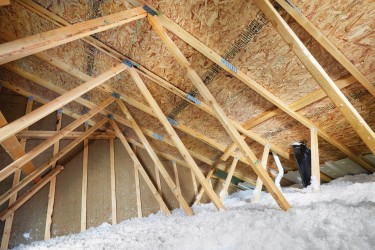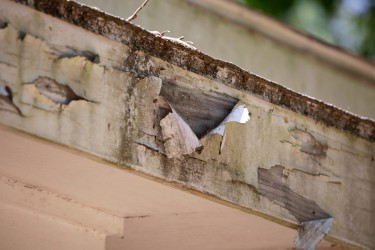An attic fan provides an affordable way to draw fresh air through your attic, extending the life of your roof and preventing moisture buildup.
Every editorial product is independently selected, though we may be compensated or receive an affiliate commission if you buy something through our links. Ratings and prices are accurate and items are in stock as of time of publication.
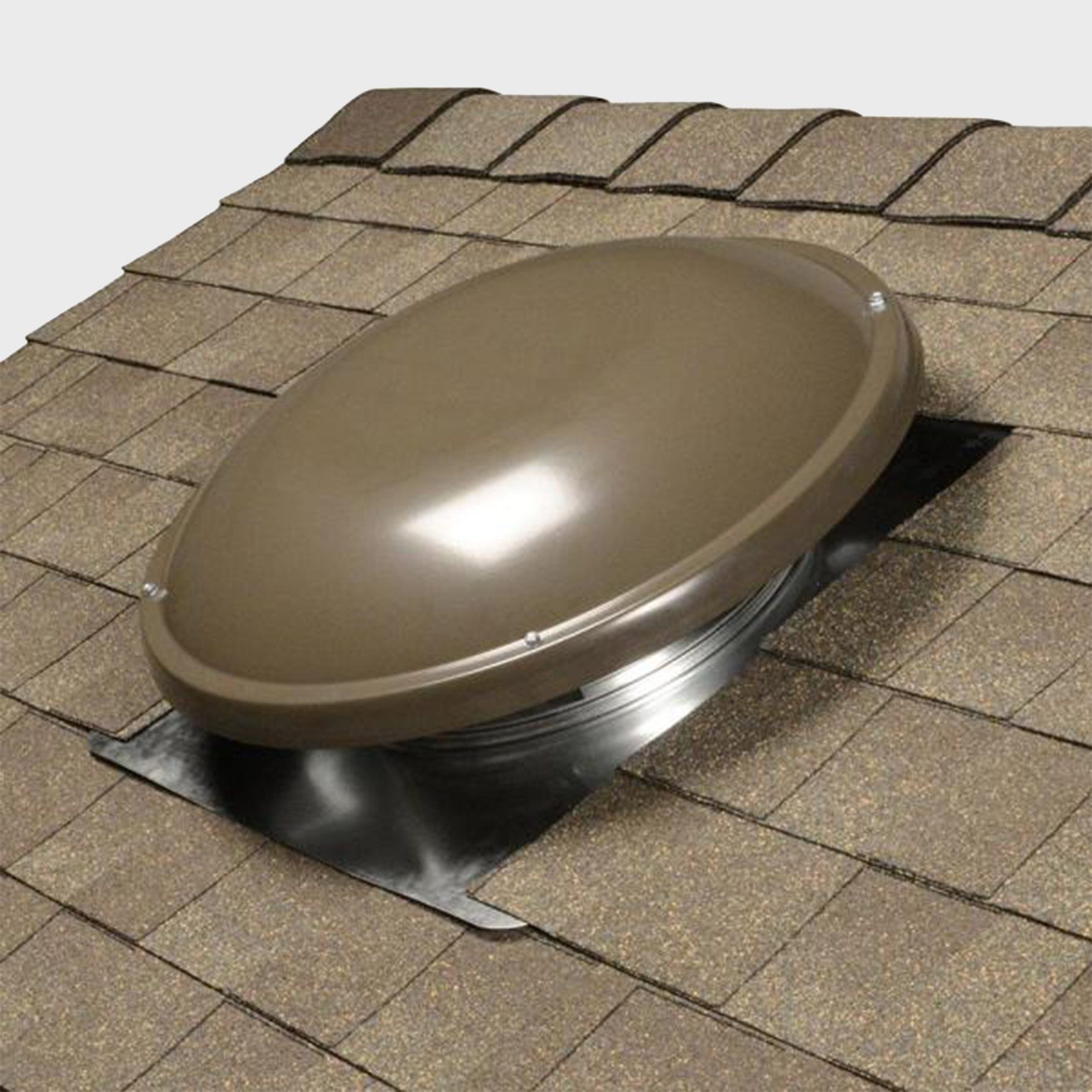
Buying an Attic Fan
When your attic is an unconditioned space — i.e. not heated in the winter or cooled in the summer — its temperature and humidity can reach critical levels. That creates a breeding ground for mildew and shortens the life of your roof.
The solution is simple: Ensure proper attic ventilation. One of the best ways to do that is to install an attic fan. These circulate fresh air, slow mold growth and stabilize the temperature differential between the exterior and interior of the roof.
Not every attic needs a fan. If you have a finished attic or there’s sufficient passive ventilation, you may be fine. But if your attic is more than 20 degrees hotter or colder than the outside temperature, or if you see signs of mold growth, then it may be time to shop for a fan.
Here are a few things to keep in mind when buying an attic fan:
- Power source. Is the fan powered by electric lines, batteries or solar power?
- Location. Attic fans are installed through the roof or an exterior wall. These are called roof-mount and gable-mount, respectively. A “gable” is the flat triangular section of siding beneath a roof’s peak. All attic fans that penetrate an exterior wall are called “gable-mount” whether they’re installed on an actual gable or not.
- Proper sizing. It may be tempting to buy the biggest, most powerful fan you can find. Don’t. A fan will draw air from anywhere it can, even gaps in your ceiling. If you install an oversized fan, you may find yourself accidentally heating or cooling your attic. Look for a fan with a cubic feet per minute (CFM) figure that’s roughly 70 percent to 80 percent of your attic’s square footage, and make sure you have adequate intake ventilation. (See IRC section R806 for more details.).
- Durability. An attic fan will be exposed to high heat in summer and frigid cold in winter. Look for a fan that can withstand those temperature swings, as well as any potential animal invasions.
- Ease of installation. Installing an attic fan is a good DIY project, especially if electrical lines are already in place.
- Convenience. Do you need to crawl up into the attic to flip a switch every time the fan should run? Or is it controlled by a thermostat?
- Cost. Most attic fans are relatively affordable, but a little comparison shopping will likely save you some cash.
Note: We’re talking about fans that circulate outside air in the attic only. Whole house fans are a different topic, outside the scope of this article.
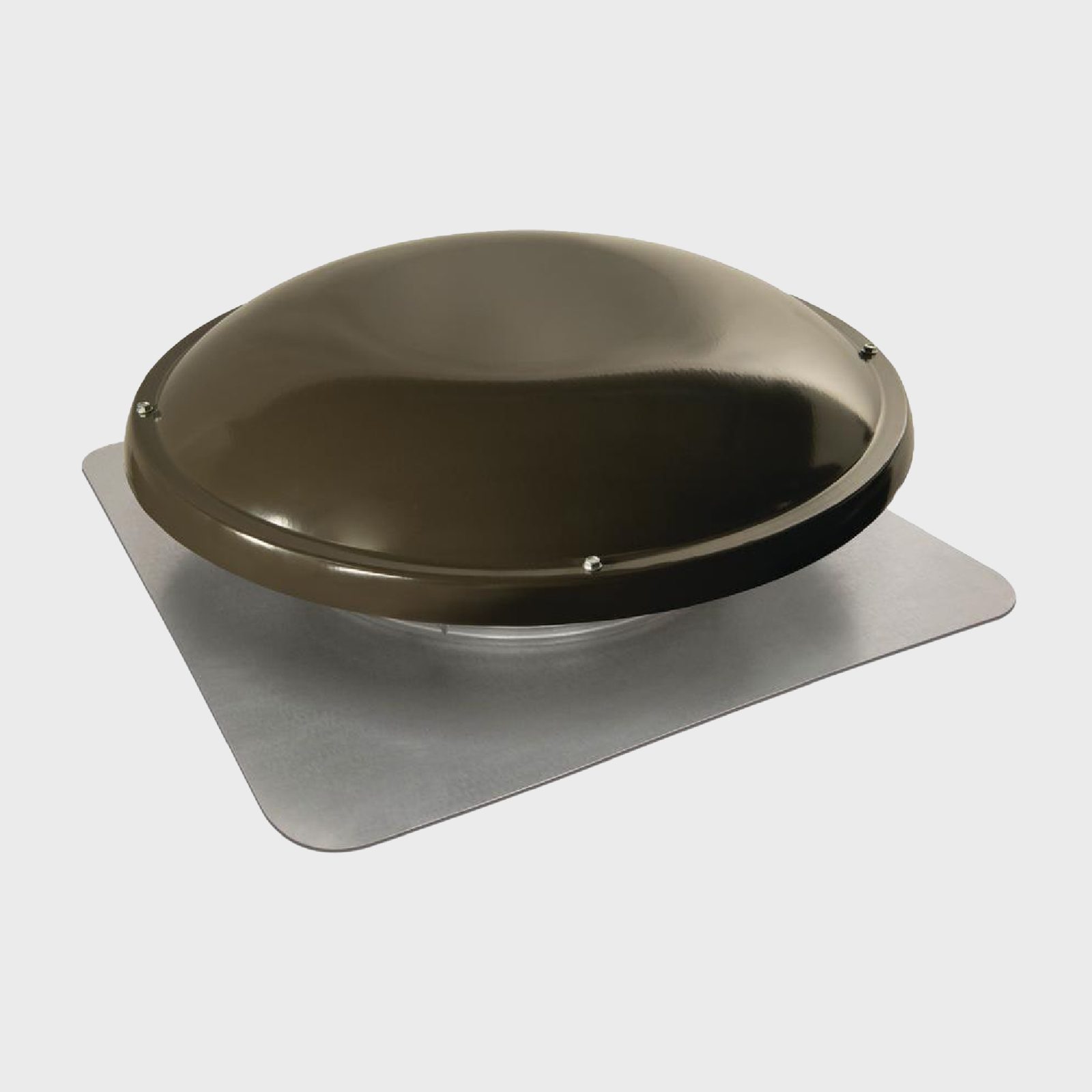
Best Roof-Mount Attic Fan (Electric)
Roof-mount fans are installed from the exterior of the roof. Because they can be seen from the curb, we like the Master Flow ERV5 power roof-mount vent’s sleek profile. Available in a range of colors, it’s easy to make it blend in with your roof. It moves 1,250 CFM, and according to the manufacturer uses up to 55 percent less electricity than other comparable models.
Installation on asphalt or wood shingles will be relatively straightforward, but materials like slate or ceramic tile will make things more difficult. You might consider a gable-mount fan instead.
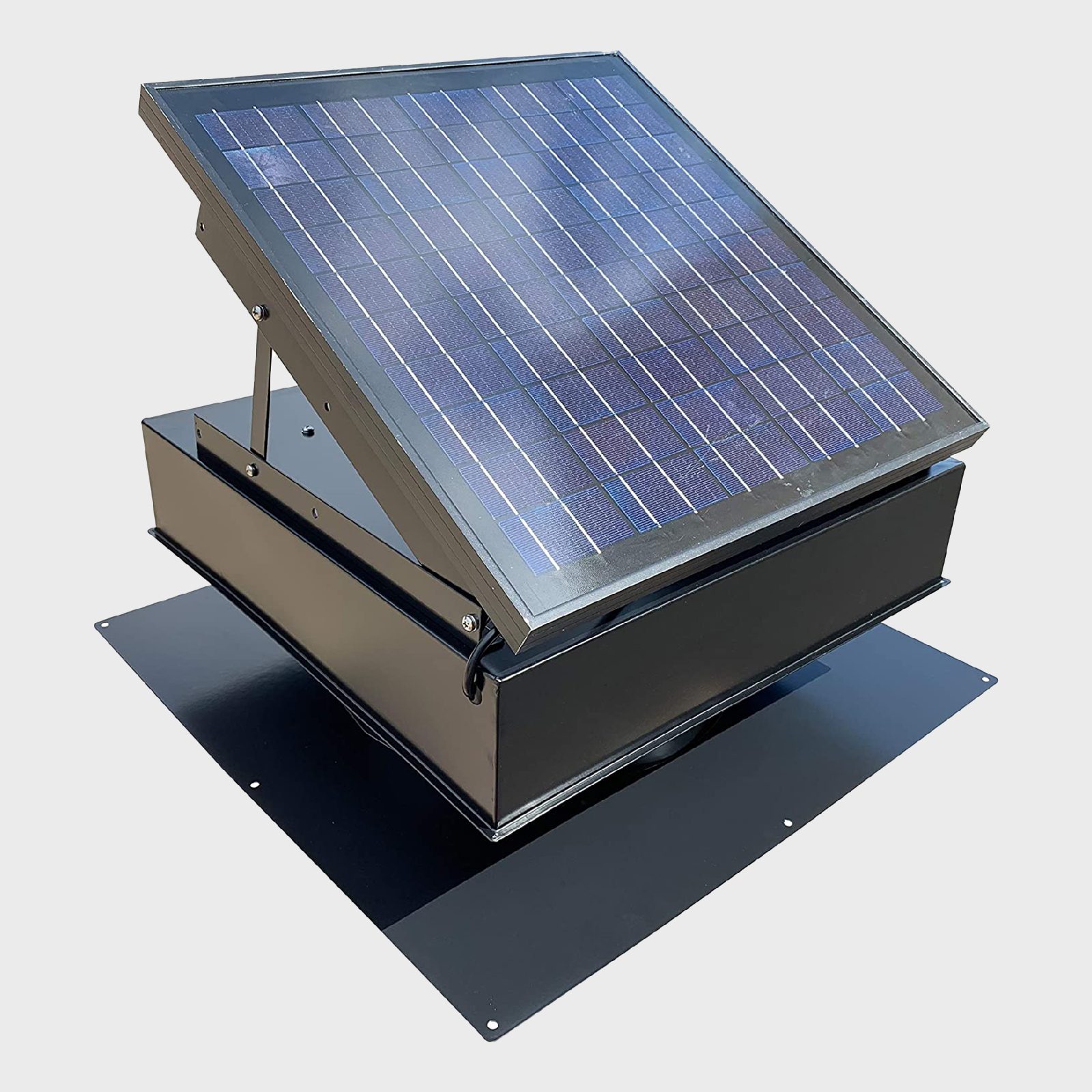
Best Roof-Mount Attic Fan (Solar)
A solar-powered fan moves air without flipping a switch or changing batteries. The Remington Solar 30-watt attic fan is a standalone unit with a solar panel directly mounted to the top of the fan.
As long as the unit is in direct sunlight, it will run as needed, pumping air out of your attic space. Remington also sells an optional 110-volt adapter so the fan can run at night and on overcast days. The fan vents up to 2,000 square feet of attic space and comes with a lifetime limited warranty.
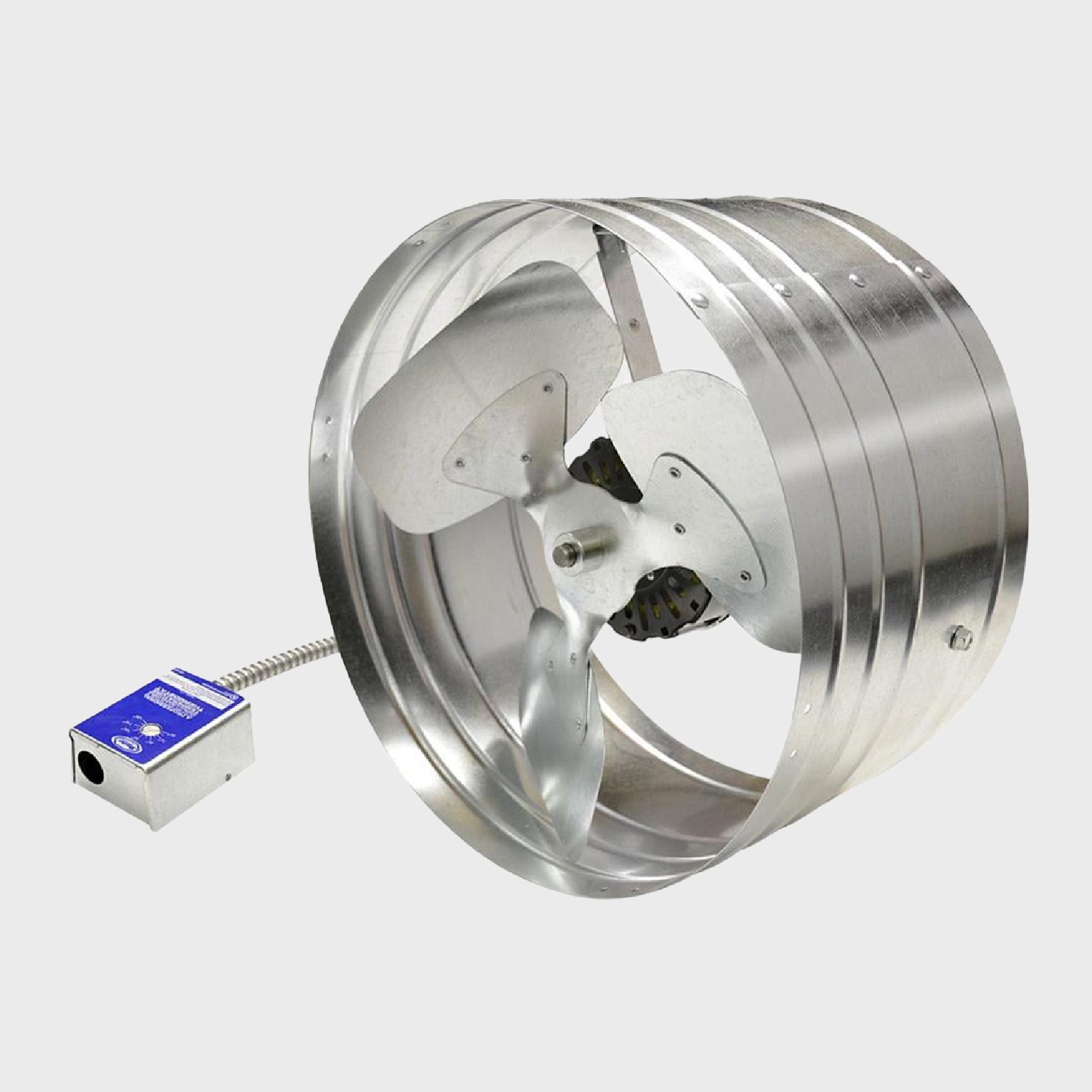
Most Durable Attic Fan
If your top priority is durability, look for a fan that’s well-built without extra features that may malfunction. We think the Master Flow EGV5 gable-mount fan checks all those boxes.
This no-frills, 1,450 CFM gable-mount fan comes with a thermostat … and that’s it. There’s no WiFi or Bluetooth to crash. The galvanized steel frame and fan blades offer an industrial appearance that suggests this fan will still be running long after the zombie apocalypse has come and gone.

Best Fan for a Small Attic
If you have a small attic, don’t install a fan that creates too much negative pressure and draws air from your living space. The Active Ventilation RBSF-8-GR pulls 365 CFM, a good match for smaller attics. This roof-mount, solar-powered fan has a five-year warranty. We wish the fan blades weren’t plastic, but we can live with it given the low price (less than $55).

Best Fan for a Huge Attic
You don’t want more fan than you need. But what if you have a huge attic?Check out the iLiving ILG8SF30S, an absolute beast of a fan that moves up to a whopping 5,088 CFM.
This 50-pound, gable-mount fan is recommended for around 7,500 square feet of space. That much draw would cause problems in almost any normal attic. But if you have a structure like a pole barn that needs ventilation, it may be the fan for you.
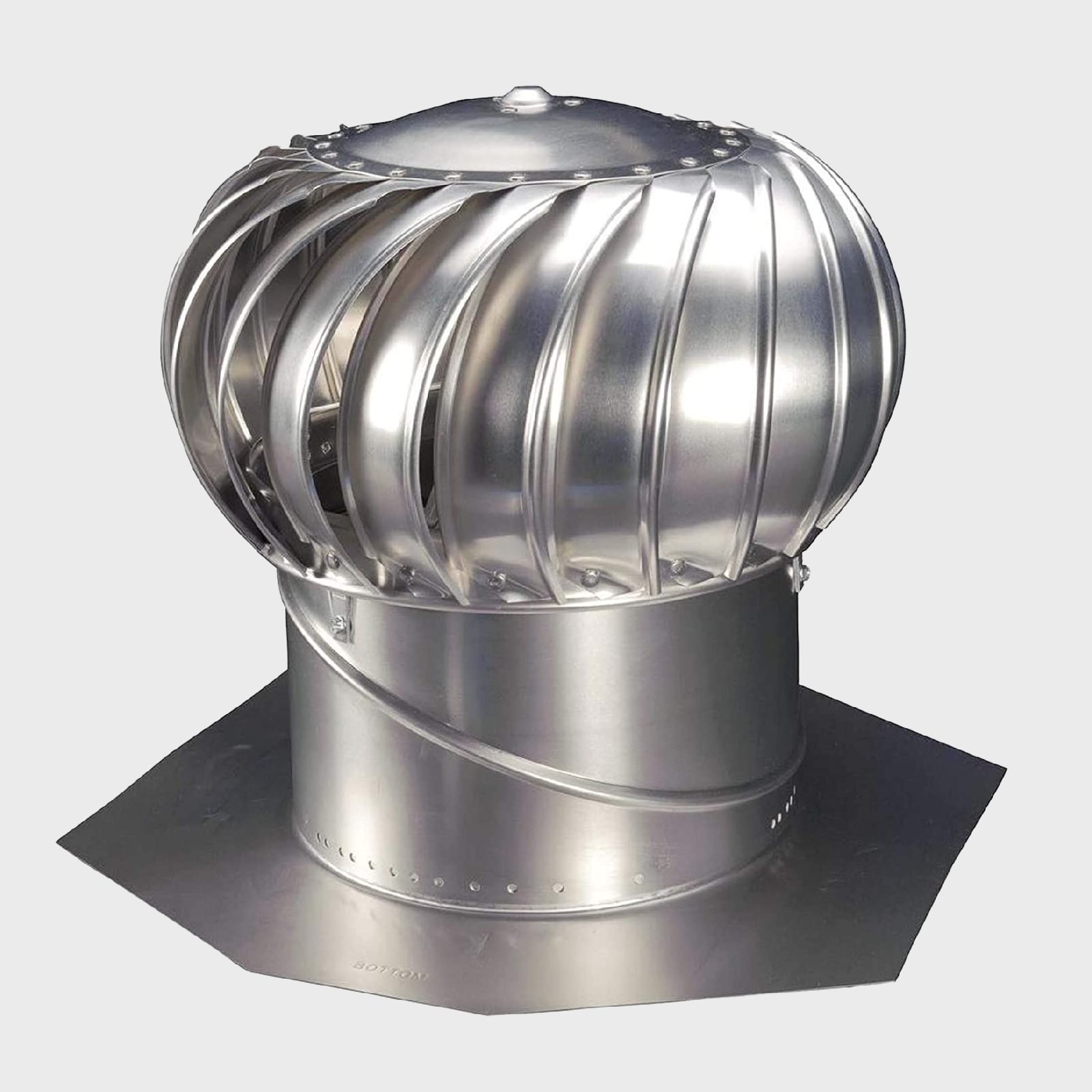
Best Wind-Driven Attic “Fan”
Do you prefer an independently powered solution to your attic venting issues? Consider a wind-driven fan, also known as a turbine.
Note that rooftop turbines, like the Lomanco 12-inch Whirlybird, technically aren’t fans. A turbine catches air that’s already in motion. However, fan and turbine vents create a vacuum to draw air out of the attic. So we felt the turbine option is worth considering.
The lack of electronics makes turbines affordable, but their dependence on wind means they can’t always move as much air as a fan that can run in any conditions. But if you live in an area with consistent wind, a turbine is a great choice.

